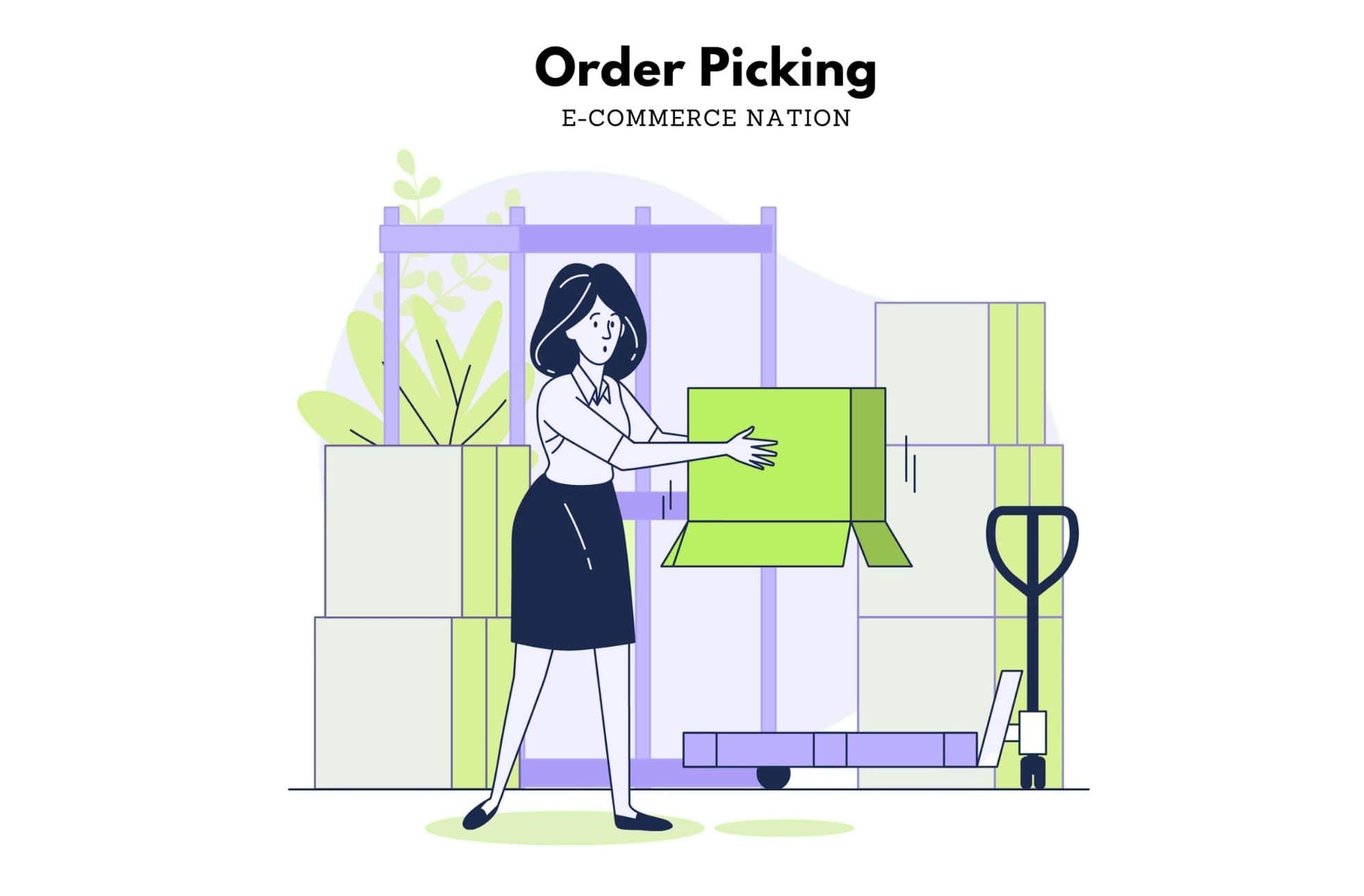The evolution of e-commerce and consumer behavior has naturally transformed various processes. Since the early days of online sales, payment methods, logistics, user experience, and many other elements have undergone significant changes. These changes are driven by trends that are based on consumer behavior, identifying specific needs to address.
Among these evolving processes, logistics has seen notable advancements, introducing new concepts such as order picking. Each year, an increasing number of consumers demand advantageous delivery processes, and speed plays a crucial role in meeting their expectations.
According to a Deloitte study conducted during the peak season of 2020, 47% of surveyed consumers preferred fast delivery (within 24 or 48 hours). This trend highlights the consumer’s desire for efficient services optimized through precise processes.
To help you understand how to integrate such logistical services, we will delve into the concept of order picking, providing a definition, and offering strategic advice.
Order picking meaning
Literally, order picking means “collecting” products.
Order picking is the process of gathering and assembling products from a warehouse or storage facility to fulfill customer orders. It involves locating the required items, collecting them, and preparing them for shipment or customer pickup.
Order picking plays a crucial role in ensuring accurate and timely delivery to customers in e-commerce and retail operations.
What is Picking in Logistics?
Technically, picking occurs after receiving various orders, enabling the consolidation and simultaneous management of multiple orders.
After receiving orders, team members responsible for product retrieval gather the items and organize them by order. This streamlines the process, saving time and enhancing efficiency in remote sales operations.
There are three main systems for organizing picking personnel:
- Person-to-Product: In this system, the picking personnel moves within the warehouse to locate the products for each order. This is the most commonly used system and is applicable to all types of warehouses.
- Product-to-Person: In this system, the picking personnel receives the products within the warehouse through an automated conveyance system or a dedicated individual. A central point (picking station) is established to consolidate the orders.
- Mixed System: This system is implemented based on the nature of the products. Heavy items can be automatically centralized, while lighter items can be retrieved by the personnel within the warehouse.
Why Implement Order Picking?
As mentioned earlier, Order picking plays a central role in the logistics of remote sales processes.
Picking enhances organizational efficiency by centralizing products from multiple orders, reducing back-and-forth movement within the warehouse for the personnel.
Depending on the warehouse size, investing in automation can be beneficial. Automation quickly proves cost-effective, optimizing logistics processes while minimizing human errors. This allows for better time management and streamlining of other processes.
Order Picking Method
When personnel retrieves products, there are several methods to facilitate and improve efficiency:

- Pick and Pack: This method involves providing a pre-printed picking list for the orders, allowing the preparer to retrieve the required products easily.
- Put to Light: This method equips personnel with illuminated order picking carts. The system indicates the necessary products, their location, and their destination.
- Pick to Light: Products to be picked are indicated by lights placed on the shelves rather than on the carts.
- Voice Picking: The most recent method involves verbally instructing the person responsible for product retrieval about the specific items and their locations.
When products are brought to personnel (Goods to Man), the processes are generally automated. Machines detect the product locations and transport them to a centralized point for consolidation.
The Process of Order Picking
Step 1
The first step in the process is product storage, which can be organized in various ways.
ABC method
The ABC method categorizes products based on their popularity, facilitating their retrieval in subsequent stages. Category A products have high turnover, while Category C products have low turnover.
FIFO
The FIFO (First In, First Out) method is particularly suitable for businesses offering perishable products. It ensures adherence to sanitary regulations while optimizing stock management. This method is commonly used in large supermarket drives.
LIFO
The LIFO (Last In, First Out) method involves organizing the warehouse with older products placed at the back and newer ones at the front. This naturally rotates the stock as new products are added.
Step 2
The second step is picking, as mentioned earlier. There are multiple methods to organize this step, whether by bringing the product to the personnel or vice versa.
Step 3
The third step involves order fulfillment, including packaging the products and arranging for their shipment.
Optimizing the Order Picking Process
The optimization of order picking depends on each company’s strategy and requirements, as not all businesses have the same needs. For example, companies with perishable products can benefit from applying the FIFO method. In a large supermarket drive, FIFO can be combined with the Pick and Pack or Pick by Light methods.
Ideally, all companies would have the resources to invest in an automated process, centralizing order picking at a strategic point in the warehouse.
In-store order picking can be optimized by allocating a portion of the stock to click & collect services. The store manager can arrange for customers to collect their orders from the store while ensuring an additional stock for popular remote-sale items. This helps anticipate demand and optimize stock availability.
Optimization also involves organizing the order picking process itself. Two different approaches can be used: Wave Picking and Batch Picking. Wave Picking groups products by category, while Batch Picking involves picking all the products in a single batch.
Picking allows you to optimize your product delivery processes for remote sales. The goal is to be as efficient as possible by considering factors such as order preparation time and error rates.
Conclusion
Mastering the art of order picking is essential for e-commerce success in today’s evolving market. By understanding the concept, implementing efficient strategies, and optimizing the process, businesses can unlock hidden opportunities, dominate their market, and supercharge their e-commerce growth. Stay ahead of the curve by leveraging the power of order picking and unleashing your business’s full potential in the world of online sales.
You can gain more In-depth knowledge by reading the following article:
Methods for Improving Your Picking and Packing Process
Key Insights
- Order Picking is the process of collecting and consolidating products for orders in e-commerce and logistics.
- Order Picking plays a crucial role in meeting consumer expectations for fast and efficient delivery.
- There are three main systems for organizing order picking personnel: person-to-product, product-to-person, and mixed systems.
- Implementing order picking enhances organizational efficiency by centralizing products from multiple orders and reducing warehouse movement.
- Automation can be cost-effective and minimize human errors in the picking process.
- Different Order Picking Methods such as pick and pack, put to light, pick to light, and voice picking, can improve efficiency.
- Product storage methods, such as ABC, FIFO, and LIFO, can optimize the picking process based on the company’s needs.
- Optimizing the order picking process depends on the company’s strategy, resources, and requirements.
- In-store order picking can be combined with click & collect services to optimize stock availability and customer convenience.
- Wave picking and batch picking are two approaches to organizing the picking process efficiently.
- Mastering the art of order picking is crucial for e-commerce success and rapid growth in today’s market.
Picture credit: freepik





